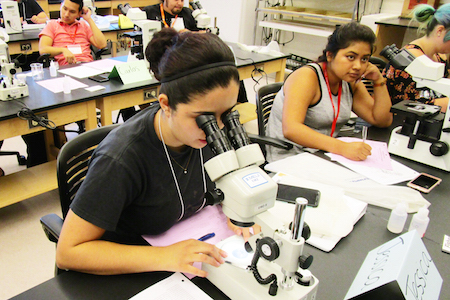
The University is one of five finalists in the baccalaureate category of the national competition run by the nonprofit Excelencia in Education. Stan State representatives will be in Washington D.C. October 5 for the announcement ceremony, said Cherie Davis, STEM Success program director and principal investigator.
“We’re very honored and excited to have our program recognized nationally for ensuring our STEM students’ success,” Davis said Aug. 9, the day the list was announced.
The 19 finalists in four categories will be featured in the 2017 “What Works for Latino Students in Higher Education Compendium” and the Growing What Works Database.,These resources are shared with funders, campus leaders and others interested in accelerating Latino student success, said Andres Quintanilla, program manager for Examples of Excelencia.
The Stan State program, Students Transitioning to Engaged and Motivated (STEM) Success, is funded in part by a five-year, $5.9 million federal education grant for Hispanic Serving Institutions. STEM Success served 360 students majoring in chemistry, biology, geology, physics, computer science and math in 2015-16. Participants had significantly higher STEM major retention rates and better grades. Latinos made up 34 percent of all graduates in STEM majors here in 2016, compared to a CSU system-wide average of 21 percent, Davis’ research shows.
The program will expand to work with 10 community colleges in the region to raise the number and preparation level of STEM majors transferring to Stan State. This summer, a four-week STEM Discovery Academy piloted for transfers and incoming freshmen.
STEM Success includes field trips, conferences and extra academic and social supports to help master STEM content and transitions to the university environment. Peer mentors lend support at The Commons, the drop-in computer lab and study area for the College of Science. The program also offers paid research internships with faculty mentors for freshmen and community college transfer students.
“We want to connect with our students early and often, and help them engage with STEM faculty and research opportunities,” Davis said. “We’ve found these practices improve access and retention and increase the numbers of students completing their STEM degrees. We know it works. It is wonderful to have this validated and recognized nationally through Examples of Excelencia.”